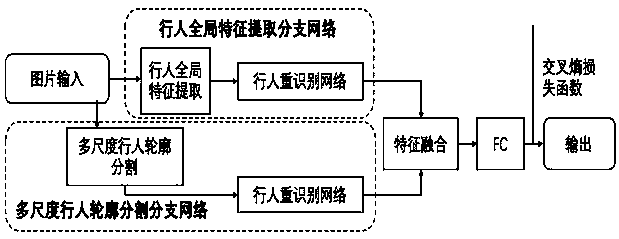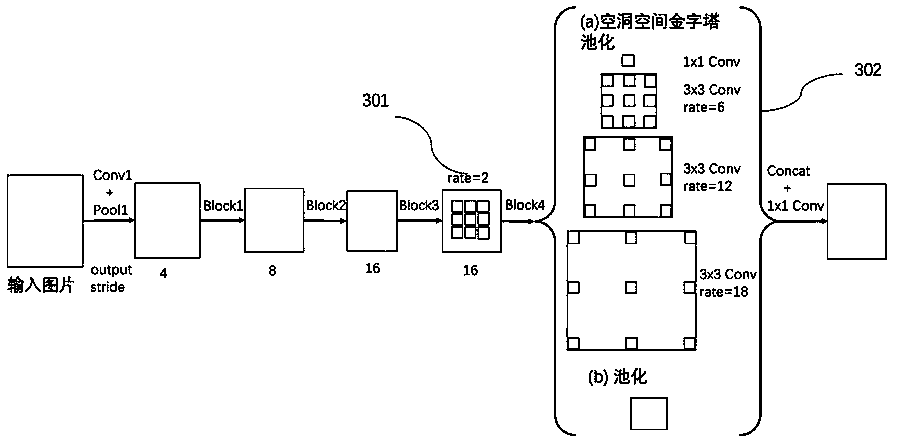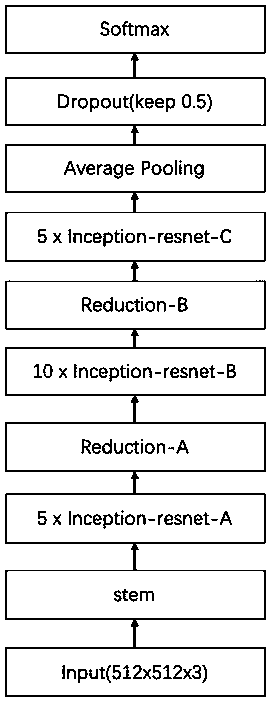Pedestrian re-identification method based on multi-scale pedestrian contour segmentation fusion
A pedestrian re-identification and multi-scale technology, applied in the field of computer vision, can solve the problems of few landing applications, complex lighting changes, complex ReID scenes, etc., and achieve a good re-identification effect
- Summary
- Abstract
- Description
- Claims
- Application Information
AI Technical Summary
Problems solved by technology
Method used
Image
Examples
Embodiment Construction
[0032] In order to describe the present invention in more detail, the technical solution of the present invention will be described in detail below with reference to the drawings and specific implementations. The process of an embodiment of the method is as follows: figure 1 Shown. The pedestrian re-identification method based on pedestrian contour segmentation of the present invention includes the following steps:
[0033] Step (1). Obtain a sufficient number of pedestrian sample images. The images can be downloaded from the Internet (Market1501, DukeMTMC-reID, CUHK03), or they can be photographed and processed by themselves; the pedestrian sample images are normalized to a size of 512×512 Take the input image as an example. If the sample image is larger than this size, it will be randomly cropped, and if the size of the pedestrian sample image is smaller than this size, it will be cropped after scaling it up.
[0034] Step (2), extract the global features of the image and the con...
PUM
 Login to View More
Login to View More Abstract
Description
Claims
Application Information
 Login to View More
Login to View More - R&D
- Intellectual Property
- Life Sciences
- Materials
- Tech Scout
- Unparalleled Data Quality
- Higher Quality Content
- 60% Fewer Hallucinations
Browse by: Latest US Patents, China's latest patents, Technical Efficacy Thesaurus, Application Domain, Technology Topic, Popular Technical Reports.
© 2025 PatSnap. All rights reserved.Legal|Privacy policy|Modern Slavery Act Transparency Statement|Sitemap|About US| Contact US: help@patsnap.com



